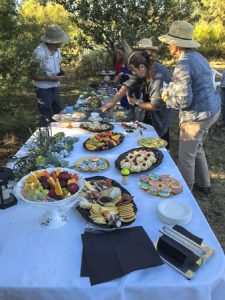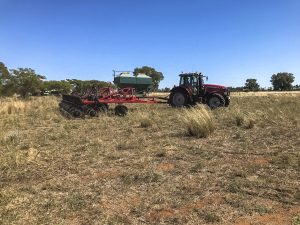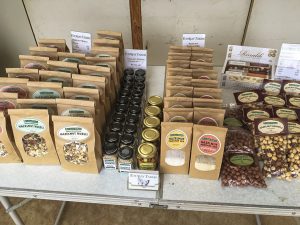A number of our members put together reports on this trip to the Central West in early April . This report is by Bob and Celia Galland and members provided additional feedback on their insights.
About 45 APS members joined this 4-day trip which included visiting 6 private properties around the Orange, Dubbo, and the Narromine area. A visit was also made to the Burrendong Botanic Garden and Arboretum.
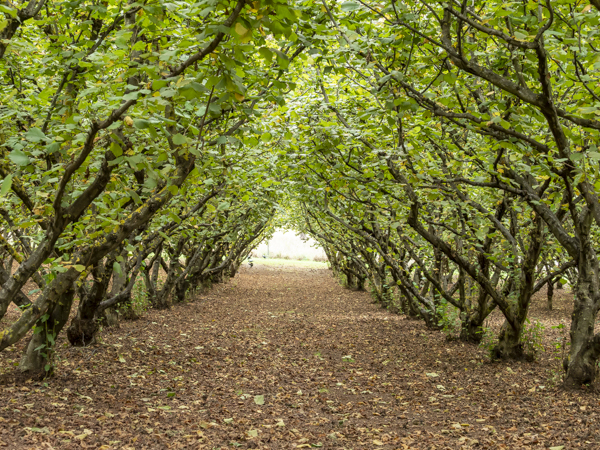
The first property was close to Millthorpe where Basil and Jean Baldwin have planted an extensive native garden around their home and established native tree windbreaks around the perimeters of sheep paddocks and around a hazelnut plantation of 500 trees. Apart from their hazelnut industry they also propagate new hazelnut plants for themselves and for sale. We walked around the sheep paddocks bordered by masses of mature endemic eucalypts, leptospermums and other species all systematically recorded during planting. Basil and Jean have successfully combined fat lamb and hazelnut production and processing with the reestablishment of local Australian natives.
Six years ago, we visited the Burrendong Arboretum during a trip with the APS, so this time was a return visit. Shortly after that first visit the government stopped annual financial support to the Arboretum. We could see during this visit how the lack of support has made the task of maintenance and further growth of the Arboretum extremely challenging. However, the manager and the Friends of the Arboretum are a passionate and knowledgeable group and have been using other avenues of funding and are committed to the survival of this important collection of rare and endangered plants. There are plans to encourage researchers to use the facilities and plant resources available at the Arboretum.
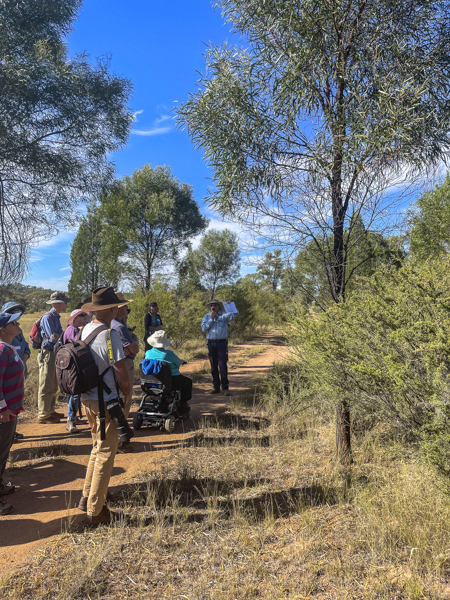
The next two days involved visiting 5 properties 2 of which belong to the same owners, Andrew, and Jennifer Knop. The “Mottlecah” property was a delight to see where Andrew is maintaining and restoring the 2,025 acres which is permanently protected by a registered conservation agreement. There are a range of ecosystems including woodlands consisting of Currawang, Ironbark, Grey, and Yellow Box and Allocasuarinas. Andrew is strategically restoring open areas which have been previously cleared to their original ecotypes. This is mainly being achieved through eradication of weeds and planting acacia seedlings and other seeds, establishing about 1,500 plants per year.
Feral pigs are controlled using entrapment techniques. Overgrazing by kangaroos is controlled by removal of old dams established for livestock. To avoid open areas being swamped by Callitris they are cut down and the resulting logs are used to create habitat for small vulnerable fauna.
Later in the day we visited Andrew and Jennifer’s other property and that of their neighbours Alan and Therese Channel. Here they are jointly restoring the previously cleared grazing lands with endemic and introduced native trees and shrubs. They have undertaken extensive revegetation to reconstruct grassy ecosystems and a river red gum forest. Throughout the properties protection for fauna by Callitris log stacks cut from “Mottelcah” are helping fauna recolonise revegetation sites. Both properties are registered conservation areas protecting indigenous flora, fauna, and cultural heritage.
‘Clearview’ not far out of Narromine was a 300acre property remaining from a larger holding since sold by Robert and Rosemary Webb. Robert showed us examples of the sustainable grazing systems, using extensive plantings of saltbush and native perennial grasses, he pioneered. Also, he was justifiably proud of the beautiful natural wetland he and his father had restored which included re-establishing an extensive river red gum forest within the wetland area.
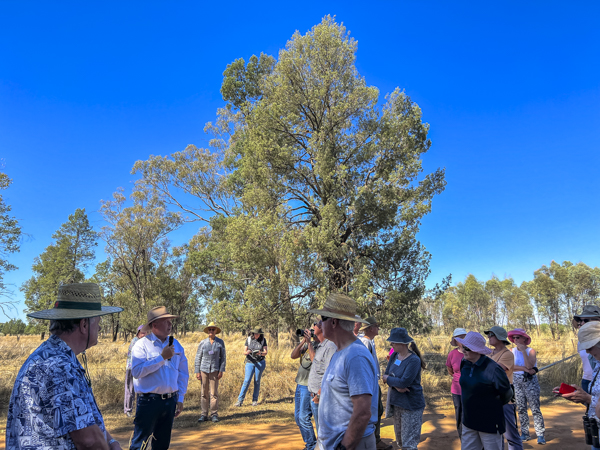
The final day we visited Bruce and Roz Maynard’s property 17km west of Narromine. Bruce is a 4th generation farmer who changed his agricultural practices after the devastating 1982 drought. He showed us his successful sustainable grazing techniques using extensive saltbush plantings and established extensive native tree plantings using carbon sequestration programs which lock up the planted areas for 150 years. They have planted over 200,000 trees and 320,000 saltbushes successfully regenerated the soil and native vegetation on his 1500ha property. Along with this he has invented the No-Kill cropping system where crops are sown into undisturbed native grasslands with no chemical or fertilizer is used. His son gave a demonstration of the technique and as the sixth generation is innovating with sustainable mixed farming practices.
Bruce practices and trains farmers in the principles of self-herding of livestock which results in low input sustainable grazing on extensive inland properties. He expressed a deep concern over the impact of widespread vapour drift from cotton spraying which affects his trees and shrubs and remaining native roadside trees. Information about the problem has been largely suppressed leading to no action to stop the pollution.
The final visit was to hear about the history behind the rare earths mine and processing plant that is in the process of being established about 25km southeast of Dubbo at Toongi and the plans and progress on the 1021ha offset area. The consulting ecologist responsible for planning the restoration of the offset area for the mine took us for a short walk through the degraded grey box woodland which forms the major ecosystem in the offset. This ecosystem will be restored with a focus on protecting the endangered Pink- tailed Worm Lizard which inhabits this area. The fenced offset area of degraded woodland includes White Box, Inland Grey Box, Fuzzy Box and White Cypress Pine along with invasive weeds. It will be no longer subject to grazing by livestock and feral animals and invasive weeds will be controlled.
It was wonderful to visit, hear, and see the sustainable farming and restoration activities of pioneering and inspiring farmers who are accepting the challenge climate change is presenting to Australian farmers and our remaining native vegetation. This was balanced with interesting visits to the arboretum and Toongi mine offset area.
We also experienced country hospitality with Jean Baldwin’s delicious hazelnuts pancakes and Jennifer Knop’s amazing array of decorated cupcakes.

